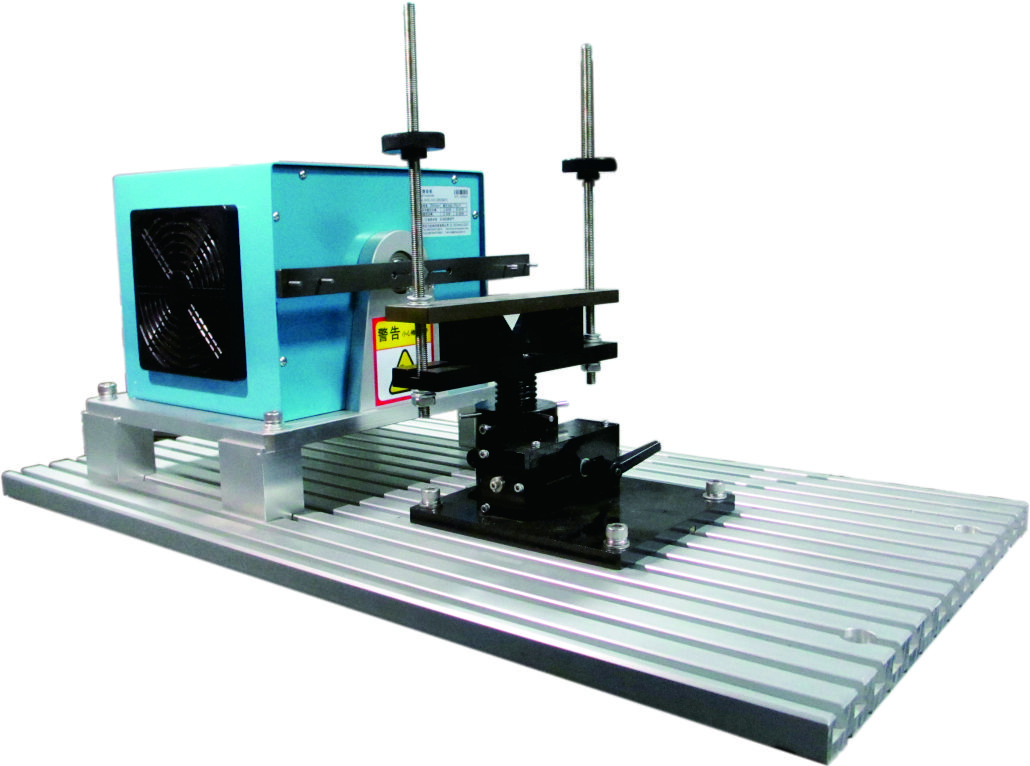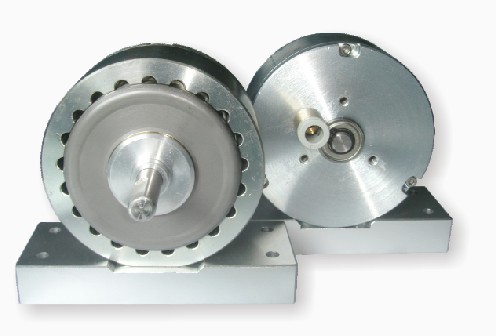The Silent Sentinel of Precision Unleashing True Power with Hysteresis Brake Dynamometers �&
Author : Medeiros Voigt | Published On : 16 Nov 2025
The relentless pursuit of power. The uncompromising demand for efficiency. The critical need for reliability under the most punishing conditions. In the high-stakes arenas of automotive engineering, cutting-edge motor development, aerospace testing, and advanced industrial applications, measuring and mastering power isn't just important – it's the very foundation of innovation and safety. Yet, traditional dynamometers often introduce their own turbulence into the equation: mechanical wear, friction variability, cooling headaches, and noise pollution that disrupts both data and concentration.
Meet the unsung hero reshaping the landscape of precision testing: the Hysteresis Brake Dynamometer. This isn't just another tool; it's a paradigm shift. Imagine a dynamometer that operates with the serene silence of a whisper, possesses the unwavering consistency of a Swiss timepiece, and delivers pure, unadulterated torque control without the messy baggage of friction pads or hydraulic fluids. Sounds almost too good to be true? Let’s delve into the fascinating physics and tangible benefits that make hysteresis brake dynamometers the indispensable partner for engineers pushing boundaries.
**The Magic Behind the Silence: It’s All in the Field �️�**
Forget grinding discs or resisting rotors splashing in oil. The core principle of a hysteresis brake dynamometer is elegantly simple yet profoundly powerful: magnetism. At its heart lies a rotor, typically crafted from a specialized magnetic alloy, spinning freely inside a stator equipped with electromagnetic coils. When these coils are energized, they generate a powerful magnetic field. This field doesn't physically touch the rotor; instead, it *induces* magnetic poles within the rotor material itself.
Here’s where the magic – hysteresis – happens. As the rotor spins, its internal magnetic domains constantly try to realign with the stator's rotating magnetic field. However, the rotor material inherently resists this rapid reorientation. This internal molecular friction, this inherent *lag* or hysteresis loss within the magnetic material, is what converts the kinetic energy of the spinning rotor into pure, controllable heat. The rotor experiences a smooth, continuous braking torque proportional to the strength of the magnetic field generated by the current applied to the stator coils. No contact. No wear. Just pure electromagnetic force harnessing motion.
**Why Engineers Are Switching On: The Unbeatable Advantages �**
The shift towards hysteresis dynamometers isn't driven by hype; it's fueled by concrete, measurable advantages that solve persistent problems in testing environments:
1. **Unrivaled Torque Control u0026 Consistency:** Say goodbye to torque ripple and unpredictable friction coefficients. Hysteresis braking delivers exceptionally smooth, continuous, and precisely controllable torque from zero speed right up to the maximum design RPM. The torque output is directly proportional to the excitation current, making control linear, predictable, and highly accurate. Whether you're simulating gentle urban driving cycles or subjecting a component to brutal shock loads, the response is instantaneous and faithful. servo motor press of control is paramount for developing sensitive control systems (like regenerative braking in EVs) or validating gearboxes under meticulously defined load profiles.
2. **The Sound of Silence (and Focus):** Imagine a test lab where the loudest sound is the whir of the motor under test, not the deafening roar of a dyno fighting against it. Hysteresis dynamometers operate almost silently because the braking force is generated internally within the rotor material – there’s no clashing metal, no air turbulence from cooling fans running at full tilt, no hydraulic pump whine. This dramatically reduces noise pollution, creating a calmer, safer, and more focused environment for engineers and technicians. It also minimizes vibration transmission, protecting sensitive instrumentation.
3. **Zero Wear, Maximum Uptime:** The absence of physical contact between the primary braking elements (rotor and stator) is revolutionary. There are no friction linings to replace, no discs to resurface, no clutches to burn out, and no hydraulic seals to leak. This translates directly to drastically reduced maintenance requirements, significantly lower operating costs over the lifetime of the equipment, and maximized uptime for your critical testing schedules. Your dynamometer investment becomes a long-term, reliable asset, not a recurring cost center.
4. **Cool Under Pressure (Literally):** While all dynamometers generate heat under load (that energy has to go somewhere!), hysteresis dynos often have simpler cooling requirements. Heat is generated directly within the rotor mass, which is typically designed with excellent thermal conductivity and can be effectively cooled using forced air or liquid cooling jackets integrated into the stator housing. Without the intense localized friction hotspots of mechanical brakes or the viscous heating inefficiencies of hydraulic systems, managing thermal loads becomes more straightforward and efficient.
5. **Ultra-Responsive u0026 Wide Speed Range:** Need to simulate the rapid load changes of a performance vehicle downshifting before a corner? Hysteresis brakes excel. Their inherent electromechanical nature allows for incredibly fast response times. Changes in braking torque happen almost instantaneously (u003c10ms typical) with the change in control current. Furthermore, they offer seamless torque control across an exceptionally wide speed range – from true zero RPM (holding torque) up to very high rotational speeds – something mechanical friction dynamometers struggle with.

6. **Clean and Controllable:** Eliminating hydraulic oil means eliminating potential leaks, spills, fire hazards (associated with hot oil), and the ongoing cost and environmental burden of fluid disposal and replacement. It’s a cleaner, safer, and more environmentally conscious solution. Control is purely electrical, integrating seamlessly with modern digital control systems and automation protocols.
**Beyond the Basics: Where Hysteresis Brake Dynamometers Truly Shine ✨**
While the advantages apply broadly, certain applications reap exceptional rewards from this technology:
* **Electric Motor u0026 Drive Testing:** The precise, smooth control and wide speed range are perfect for characterizing electric motors (efficiency mapping, torque ripple analysis), testing motor controllers (field weakening, regenerative braking), and evaluating battery performance under dynamic loads. The silent operation is a major plus in labs filled with sensitive electronics.
* **Automotive Powertrain Development:** From validating engines and transmissions to testing starters, alternators, and even complete hybrid/electric powertrains, hysteresis dynos provide the precise, repeatable, and dynamic loading needed. Durability testing benefits immensely from the zero-wear characteristic and consistent loading over thousands of cycles.
* **Aerospace Component Testing:** Testing actuators, flight control systems, auxiliary power units (APUs), and landing gear components demands precision and reliability. Hysteresis dynamometers offer the clean, controlled, and vibration-free environment critical for aerospace validation.
* **Material Testing u0026 Simulation:** Simulating constant torque loads for fatigue testing of shafts, couplings, or gears, or replicating realistic inertial loads in servo system testing. The smooth, controllable nature provides excellent results.

* **Quality Assurance u0026 End-of-Line Testing:** For high-volume production testing of motors, pumps, or small engines, the reliability, low maintenance, and consistent performance of hysteresis dynos ensure accurate pass/fail checks and reduce costly downtime.
* **Research u0026 Development:** Universities and advanced Ru0026D labs benefit from the precision, wide operating envelope, and clean data acquisition capabilities for pushing the boundaries of new technologies.
**Demystifying the Design: More Than Just Magnets ⚙️�**
A modern hysteresis brake dynamometer is a sophisticated system integrating several key components:
* **The Heart: The Hysteresis Brake Assembly:** This includes the stator (housing the electromagnetic coils) and the specially designed hysteresis rotor. Rotor material properties are critical for performance – high hysteresis loss coefficient and good thermal conductivity are key.
* **Power u0026 Control Electronics:** A high-quality, fast-response controller regulates the DC current supplied to the brake coils. This controller interprets torque commands (analog voltage, digital signal, software command) and modulates the current precisely to achieve the desired braking torque. Advanced controllers offer features like torque limiting, speed tracking, and programmable profiles.
* **Cooling System:** Essential to dissipate the generated heat. This can range from simple forced air (fans) to sophisticated liquid cooling circuits with heat exchangers, depending on the power rating and duty cycle. Thermal management is crucial for sustained high-power operation and longevity.
* **Coupling u0026 Mounting System:** Robust couplings connect the dynamometer to the device under test (DUT), transmitting torque while accommodating minor misalignments. Rigid mounting ensures stability and accurate torque measurement.
* **Sensing u0026 Instrumentation:** Integrated torque transducers (typically non-contact, like strain gauges on a shaft with telemetry or phase shift measurement) provide direct, high-fidelity torque feedback for closed-loop control and data acquisition. Encoders or tachometers measure speed. Temperature sensors monitor critical points.
* **Housing u0026 Safety:** A sturdy frame encloses the components, providing protection and facilitating mounting. Safety features include overspeed detection, over-temperature shutdown, and emergency stop circuits.
**Choosing Your Champion: Key Considerations ��**
Selecting the right hysteresis brake dynamometer requires careful thought. It’s not just about peak numbers:
1. **Required Torque u0026 Power:** Determine your maximum continuous and peak torque requirements, as well as the corresponding speeds. Calculate power dissipation (Torque x Speed) – this dictates cooling needs. Ensure adequate headroom.
2. **Speed Range:** Verify the dyno operates smoothly across the entire speed range your application demands, especially at low speeds where holding torque is critical.
3. **Control Requirements:** How will you control it? Analog voltage? Digital communications (CAN, EtherCAT, Modbus)? Software integration? Ensure the controller meets your interface and feature needs (e.g., speed control mode, programmable profiles).
4. **Cooling Capacity:** Match the cooling system (air/liquid) to your maximum sustained power dissipation and duty cycle. Underestimating cooling leads to derating or shutdowns.
5. **Accuracy u0026 Resolution:** What level of torque measurement accuracy and control resolution is needed for your testing? Look at transducer specifications and controller specifications.

6. **Physical Integration:** Dimensions, mounting footprint, shaft configuration, coupling type – ensure it fits mechanically with your test setup.
7. **Durability u0026 Duty Cycle:** Consider the expected operating hours and load profiles. High-duty cycle applications need robust design and cooling.
8. **Service u0026 Support:** Partner with a reputable manufacturer known for quality engineering, responsive technical support, and readily available parts.
**The Future is Frictionless: Embracing the Hysteresis Advantage �**
The trajectory of engineering testing points towards higher precision, greater efficiency, smarter automation, and reduced environmental impact. Hysteresis brake dynamometers sit squarely at this intersection. They represent a mature yet continuously evolving technology that delivers tangible, bottom-line benefits: reduced operational costs through minimal maintenance, enhanced productivity via reliable uptime, superior data quality through precise control, and a significantly improved working environment.
For engineering leaders and test lab managers, the choice is increasingly clear. When uncompromising precision, silent operation, and long-term reliability are non-negotiable, the electromagnetic elegance of the hysteresis brake dynamometer offers a compelling solution. It’s not merely about measuring power; it’s about mastering it with unprecedented control and confidence, freeing engineers to focus on innovation rather than dyno downtime.
Stop wrestling with friction. Stop drowning in hydraulic oil costs. Stop compromising on data quality due to inconsistent torque. Step into the frictionless future of testing. Experience the difference that pure electromagnetic control can make. Explore how integrating a hysteresis brake dynamometer can transform your testing capabilities, boost your productivity, and accelerate your path to breakthrough performance. The silent sentinel of precision awaits. Let’s unlock true potential, together.
